Yoga is great for both mind and body and sometime even for the soul. According to the Wikipedia, “it is a group of physical, mental and spiritual practice that originated in ancient India”. Prime Minister of India, Shri Narendra Modi asserted on declaring Yoga as one of the International Celebration Day and since its inception in the year 2015 by United Nations General Assembly we are celebrating International Yoga Day on 21st June of every year.
Here are few yogic positions listed to help you attain focus, health and fight back against various diseases:
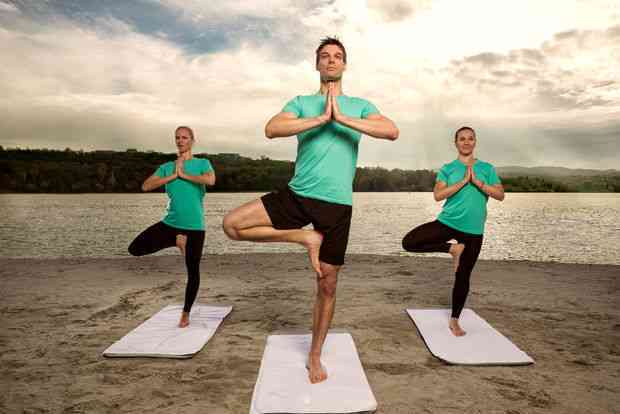
1. Vrikshasan or Tree Pose
When to Do: Before doing the Tree Pose, make sure you have not eaten anything. Do it in the morning, actually when you are uninhibited by external forces.
How to Do: To do this, join your hands together over your chest. Lift up on of your leg to tuck it over your other leg. Take deep breaths. Hold this pose for one minute then do it with your other leg.
Benefits: Vrikshasan or Tree Pose stabilizes your legs. It brings balance to the body, strengthens ligaments and tendons of the feet. It also tones your buttocks and strengthens hip bones. Some say this pose helps bring your self-confidence and self-esteem, improves your concentration and focus, while leaving you feeling rejuvenated.

2. Adho Mukha Svanasana or The Downward Facing Dog Pose
When to Do: This asana is best done on an empty stomach and clean bowels. It is suggested that you hold this pose for about one to three minutes.
How to Do: Stand on four limbs, exhale and lift your hips while straightening your elbows and knees. Make sure that your body forms an inverted ‘V’, your hand is in line with shoulders and your feet in line with your hips. Point your toes outward. Press your hands on the ground, lengthen your neck. Your ears should touch your inner arms and your gaze should be on your navel. After few minutes, bend your knees are return to your normal position. Who Should Not Attempt This Pose: People suffering from Carpal Tunnel Syndrome, High Blood Pressure, Detached retina, dislocated shoulder, weak eye capillaries, diarrhea and pregnancy.
Benefits: The Downward Facing Dog Pose lengthens spine and tones muscles. It increases blood circulation to brain. Hence, it calms the mind. It relives headache, insomnia and fatigue. Also, it reduces anxiety and depression. The pose strengthens and tones arms and legs.
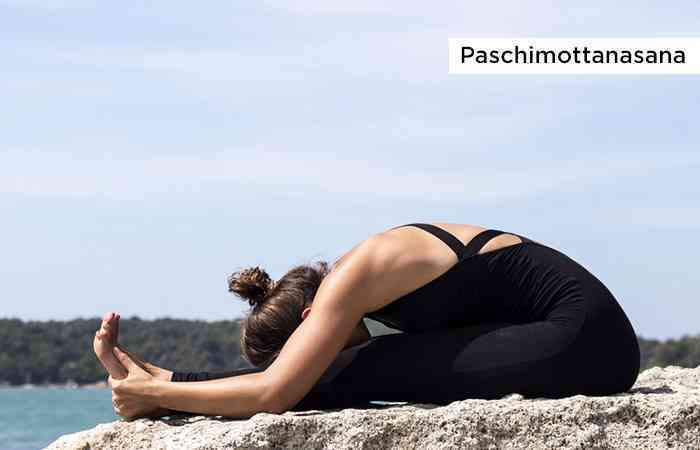
3. Paschiomottansana or Seated Forward Bend Pose or Intense Dorsal Stretch
When to Do: Do it in the morning, with an empty stomach. In case you want to do it in the evening, do it after 3-4 hours of having your meal.
How to Do It: Sit erect with your legs stretched out in front of you. Flex your toes towards yourself. While inhaling, raise your arms over your head. Stretch. While exhaling, bend forward. Your chin should move towards your toes and you should feel a fold from your hip joints. Stretch out your arms and let them reach as far as they can. Possibly till your toes. Try not to stretch too far. Inhale. Lift your head slightly and elongate your spine. Exhale. Move your naval towards your knees. Place your head on your legs and hold the pose. Inhale. Come back up to the sitting position with arms stretched out. Exhale. Lower your arms.
Who Should Not Attempt This Pose: People suffering from asthma, diarrhea, back injury and pregnancy. As a beginner, refrain from pushing yourself too much.
Benefits: Seated Forward Bend relieves a person off stress. It reduces fat on abdomen, tones shoulder and stretches your hips. It is said to calm mind, reduce anger and irritability. The pose improves flexibility and increase height. The pose regulates blood pressure and enhances functioning of kidneys.
 4. Sethu Bandhasana or The Bridge Pose
4. Sethu Bandhasana or The Bridge Pose
When to Do: Do the asana in the morning on an empty stomach and clean bowel. In evening, if you wish, do it after 3-4 or before eating. Hold the pose for at least 30 to 60 seconds. That is, for at least one minute.
How to Do: Lie flat on your back. Bend your knees and place your feet on the floor, hip width apart. Make sure that your ankles and knees are placed in a straight line. Rest your arms beside your body, palm facing down. While inhaling, lift your back off the floor. Roll in your shoulders and touch your chest with your chin without having to personally move it. Let your shoulders, feet and arms support your weight. Firm up your buttocks by tightening them. Make sure your thighs are parallel to each other and the floor. Interlace you fingers and push your hands harder to the ground, lifting your torso higher. Exhale and slowly, release your pose.
Who Should Not Attempt: People suffering from neck injury, pregnant woman and those with back problems.
Benefits: This asana helps to strengthen back muscles, reliving any tension developed in the back. It stretches and tones the neck, spine and chest. It has a tendency to reduce, stress, anxiety and calms the brain. The lungs are opened up and reduces thyroid problem. It also massages the digestive organ, thereby helping to improve digestion. It helps alleviate menstrual pain and symptoms of menopause. The pose helps in curing high blood pressure, sinusitis, asthma, insomnia and osteoporosis.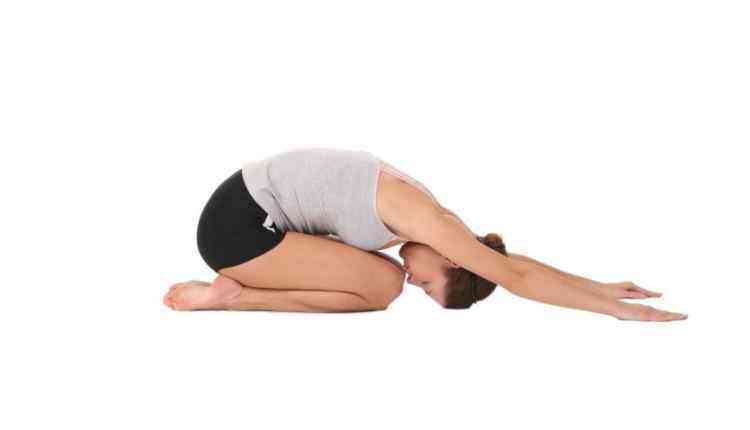
5. Balaasana or The Child’s Pose
When to Do this Pose: Like every other yoga, it should be performed four to six hours after any meal. Your bowels and stomach should be empty. As a relaxing position, it can be attempted anywhere.
How to Do This Pose: Kneel down on the floor, touching your big toes to each other as your sit on your heels. Upon getting comfortable, spread your knees hid-width apart. Inhale. Bend forward to lay your torso between your thighs. Then exhale. Broaden the sacrum all across the back of the pelvis and narrow the points of your hip such that they point towards your navel. Settle down on your inner thighs. Stretch the tailbone away from the back of the pelvis as you lift the base of your head slightly away from the back of the neck. Stretch your arms forward, place them in front of you in a way that they are in line with your knees. Release the fronts of your shoulder to the floor. Check if you feel the weight of the front shoulders pulling the blades widely across your back. While releasing the asana, stretch the front torso. Breath in and lift from the tailbone while the tailbone pushes down into the pelvis.
Benefits: The pose helps release tension from the chest, back and shoulders. If you have a bout of dizziness or fatigue, attempt this pose. It reduces anxiety and stress. The pose massages and flexes the internal organ of the body, keeping them active and supple. The asana helps to stretch the spine. It also relives the pain in lower back and neck. Stretches the ankle, hips and of course, the thighs. The pose promotes blood circulation throughout the body. The tendons, muscles and ligaments in the knee area are thoroughly stretched. It encourages the right way of breathing and calms the person down.

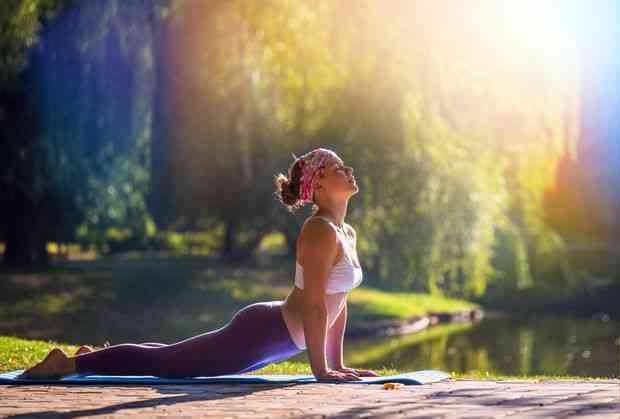
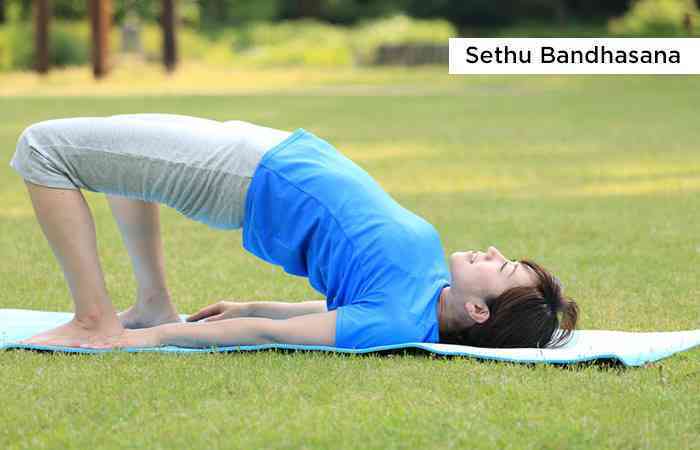 4. Sethu Bandhasana or The Bridge Pose
4. Sethu Bandhasana or The Bridge Pose